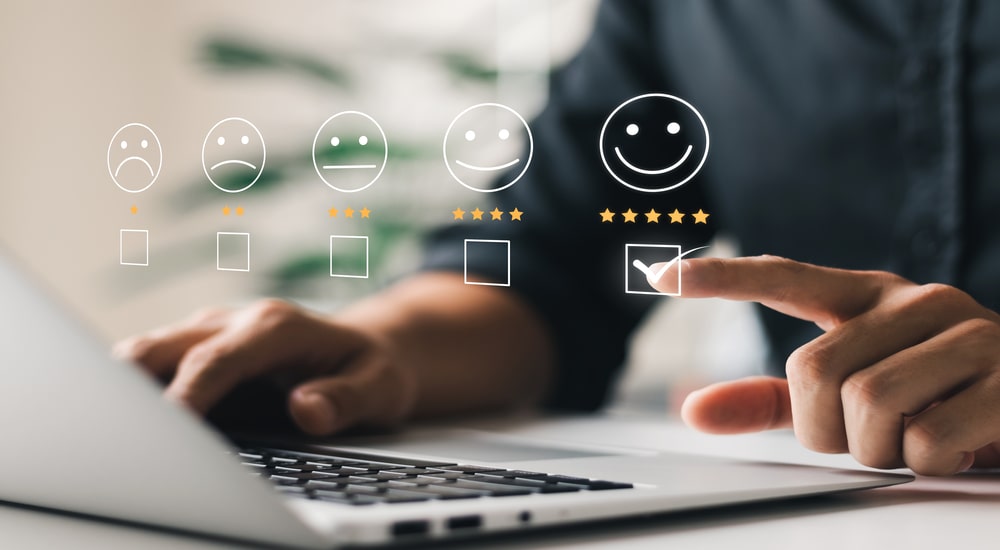Supsis Chatbot System: Enhancing Business Communication and Customer Interaction
Chatbot system is a software technology that enables businesses to communicate more effectively and easily in the digital world. With this technology, businesses can interact with their customers faster, more efficiently, and seamlessly.
Also known as automated response systems, chatbots are utilized in various sectors. These systems utilize artificial intelligence techniques to understand users’ questions and provide answers. This reduces the burden on customer service teams and increases customer satisfaction.
The chatbot system provides time and cost savings for businesses, as it can quickly respond to users’ questions and requests. Furthermore, its 24/7 availability ensures uninterrupted service to customers.
What is a Chatbot?
Chatbots are automated conversation systems that can interact with users using artificial intelligence and natural language processing technology. These digital assistants can offer real-time responses to users through advanced algorithms and learning capabilities.
A chatbot analyzes user queries and generates the most suitable answers based on the information in its database. Thanks to natural language processing technology, chatbots can understand text-based questions and provide meaningful responses. This system can also detect changes in meaning in different expressions, even if the user uses different wording.
Chatbots can be used on various platforms to engage with users. For instance, they can be integrated as live chat windows on a website or be present in messaging applications. Additionally, chatbots can support businesses’ customer service teams by answering user questions, providing product recommendations, and even processing orders.
Benefits of Chatbots
Chatbots offer numerous advantages to businesses and users, enhancing business processes and customer experiences. Here are some key benefits of using chatbots:
Automated Customer Service: Chatbots alleviate the workload of customer service teams and provide 24/7 service to customers. They help solve users’ problems by quickly responding to their questions.
Effective Data Collection: Chatbots gather valuable customer data by interacting with users. This data can be used to improve marketing strategies and offer more personalized services.
High Efficiency: Chatbots automate repetitive tasks, allowing businesses to operate more efficiently. By saving employees’ time, they enable them to focus on more important tasks.
Instant Responses: Chatbots can provide instant answers to users and offer quick solutions. This enhances customer satisfaction and prevents time wastage.
Scalability: Chatbots can interact with multiple users simultaneously and serve an unlimited number of customers. This assists businesses in growing and expanding.
Cost Savings: Chatbots reduce customer service costs for businesses. Using chatbots instead of live human representatives helps cut personnel expenses.
The benefits mentioned above demonstrate how chatbots can assist businesses and users. Using chatbots offers advantages such as increased efficiency, cost savings, and a better customer experience.
Designing a Chatbot
When designing a chatbot, it’s important to consider users’ needs and expectations. A careful design process is required to ensure that the chatbot is user-friendly, understandable, and effective. Here are some key points on how a chatbot is designed and customized:
Defining Purpose: The first step is to define the purpose and functions of your chatbot. It’s important to clarify what you want to achieve and what types of services you will offer to users.
Personalization: As the chatbot interacts with your customers, it should adapt to their needs and preferences. Customizing the chatbot to provide a personalized and unique experience enables users to have a more individualized interaction.
Interface Design: A user-friendly interface is crucial for the chatbot. A simple and understandable layout and navigation structure enable the chatbot to communicate more effectively with users.
Response Options: To allow the chatbot to provide quick and accurate responses to users’ questions and requests, offering various response options is important. This helps users reach their desired outcome faster.
In the design process, make sure that the chatbot aligns with your brand. Reflecting your brand’s colors, logos, and other characteristics in the chatbot’s design helps create a strong brand image.
Remember, when designing a chatbot, providing users with an easily accessible, understandable, and personalized experience is crucial. This way, your chatbot can better meet users’ needs and add value to your business.
Natural Language Processing
The key to interacting with chatbots lies in natural language processing technology. Natural language processing is a branch of artificial intelligence that focuses on enabling computers to understand and interact with human language. This technology allows chatbots to have conversations that are indistinguishable from those between humans.
Natural language processing encompasses various subfields, such as syntax, semantics, sentiment analysis, and translation. These components enable chatbots to understand user queries, provide meaningful responses, and adapt to the nuances of human language.
With the use of natural language processing technology, chatbots have made significant strides in human-machine interaction. Users can naturally ask questions and receive service akin to what they would expect from a human. This greatly enhances customer experience and provides businesses with the opportunity to offer more efficient service.
User Experience
chatbots: Providing a good user experience is a key goal for chatbots. Users expect to interact with chatbots naturally and have a seamless experience. Here are some tips for improving the user experience of
Ease of Use: The usage of the chatbot should be straightforward and help users find the right answers quickly. It should operate with simple and clear commands.
Quick Responses: Users expect fast and accurate responses from chatbots. The chatbot should easily understand the user’s question and provide the appropriate response promptly.
Well-Designed Messages: The communication style of the chatbot should be clear and comprehensible for users to understand and respond to messages easily. Short and concise messages are preferred over long and complex sentences.
Error Handling: Users might make mistakes while interacting with chatbots. The chatbot should be able to understand these mistakes and guide the user appropriately toward the right answers.
Personalization: Chatbots should offer a personalized experience by understanding users’ preferences and habits. By doing so, they can provide personalized recommendations and solutions.
User experience is a critical factor for the success of chatbots. By paying attention to the tips mentioned above, you can meet user expectations and enhance their satisfaction.
Applications in Various Industries
Chatbots have a wide range of applications across different industries. These digital assistants are used to streamline processes, improve customer experience, and optimize operational procedures. Here are examples of how chatbots are utilized in various industries:
E-commerce: E-commerce websites can integrate chatbots into customer service to answer user queries, provide product recommendations, and handle order tracking. This enhances customer experience and boosts sales.
Hospitality: Hotels can use chatbots for the reservation process. Customers can quickly and easily perform tasks such as room selection, getting price information, and confirming reservations through chatbots.
Aviation: Airlines can employ chatbots to provide flight information, book tickets, and facilitate check-in processes. This saves passengers time and improves their travel experience.
Banking: Banks can use chatbots to allow customers to check account details, transfer money, and apply for loans. This enhances customer satisfaction and service quality.
Tourism: In the tourism sector, chatbots can offer guided tours, travel recommendations, and information about accommodations. This provides tourists with more information to plan their trips effectively.
These are just a few examples, and the application of chatbots continues to expand. Implementing chatbots in any industry can help improve efficiency, enhance customer experience, and provide a competitive edge.
How to Implement a Chatbot System
An overview of the steps and resources required to implement a chatbot system.
Implementing a chatbot system is an impressive solution that assists businesses in customer service, marketing strategies, and operational processes. To set up
chatbots, you can follow these steps:
- Needs Analysis: Begin by understanding the needs and expectations of your business. Determine how the chatbot can assist you and understand the needs of your target audience.
- Platform Selection: Choose a platform to build your chatbot. Different chatbot platforms are available, so select the one that best fits your business needs. Consider factors such as user-friendly interfaces, customization options, natural language processing capabilities, and integration options when choosing a platform.
- Customization and Training: Customize the chatbot to fit your business and target audience. Ensure the chatbot asks the right questions and provides accurate answers for a user-centric and personalized experience. Regularly train the chatbot to improve its performance.
- Integration: Integrate the chatbot with other systems used by your business. Ensuring compatibility with CRM systems, social media platforms, your website, and other applications is essential for enhancing customer experience.
- Testing and Development: Testing the chatbot is crucial. Interact with real-time users to evaluate the chatbot’s performance and make improvements. Use user feedback to identify and rectify any issues.
- Promotion and Education: Provide users with education and guidance on using the chatbot effectively. Offer instructions or guides on how to use the chatbot. Implement marketing strategies that highlight the benefits of the chatbot and how it can assist your business.
Setting up a chatbot system can enhance efficiency, improve customer experience, and increase your business’s competitiveness. By following the steps mentioned above, you can successfully implement a chatbot system.
Platform Selection
Chatbots come in a wide variety of platforms that can be used for various purposes. Choosing the right platform is crucial to achieving the best results for your business. Comparing different chatbot platforms and selecting the one that suits your needs is a fundamental factor for a successful chatbot experience.
There are some factors to consider when choosing a chatbot platform. Factors such as the size of your business, your budget, your technical skills, and the chatbot features you can expect can influence your platform choice. Here are some key factors to help you compare different chatbot platforms:
| Platform | Ease of Use | Customize | Integration | Technical support |
|---|---|---|---|---|
| Platform A | Easy | High | Full | Effective |
| Platform B | Middle | Middle | Annoyed | Insufficient |
| Platform C | Difficult | Low | Annoyed | Annoyed |
These factors provide a guide to make your decision easier. User-friendliness means the platform has a user-friendly interface. Customization capabilities allow your chatbot to be tailored to your brand and integrated into other platforms. Integration ensures your chatbot is compatible with your existing systems, and technical support is necessary for solving potential issues and optimizing performance.
When choosing a platform, consider your business priorities and goals. Each platform has its own advantages and disadvantages, so think carefully and conduct research to achieve the best outcome. Choosing the right platform is crucial for a successful chatbot experience and can provide significant benefits for your business.
Development Process
The development process of a chatbot is a crucial step that requires careful planning to provide the best user experience. This process is important to ensure your chatbot functions successfully and meets user expectations.
Firstly, you need to determine the purpose and target audience of your chatbot. Deciding what your chatbot will be used for and which type of users it’s designed for are important decisions during the development process. This will establish a foundation for how your chatbot will be designed and what features it will have.
Choosing the right platform is also important when designing a chatbot. By comparing different chatbot platforms, you can select the one that best fits your needs. After that, you can proceed with the development process for your chatbot.
During the development process, you’ll design the logic and functionality of your chatbot. You’ll determine how your chatbot will respond to questions, understand commands, and provide answers. You can use natural language processing technology to enable your chatbot to interact with users.
Additionally, your chatbot needs to be tested. Testing in different scenarios is essential to see how your chatbot behaves and provides accurate results. Continuous improvement of your chatbot, considering user feedback, might also be necessary.
After completing the development process of your chatbot, you can move on to the promotion and marketing phase. Various marketing strategies can be employed to introduce your chatbot to users and inform them about its benefits.
Promotion and Marketing
Tips for introducing and promoting your chatbot to users:
- Social Media: An effective way to introduce your chatbot is through social media platforms. Create an account for your chatbot on platforms like Facebook, Twitter, or LinkedIn, and explain the benefits and features to users. Sharing real customer reviews where the chatbot successfully answers questions and assists users can establish credibility.
- Email Marketing: You can introduce your chatbot to potential customers on your email list. Use relevant email content to explain how your chatbot works and how it can help users. Additionally, offer incentives like discounts or promotions to encourage users to engage with the chatbot.
- Website and Blog: Promote your chatbot on your website or blog. For instance, your chatbot could be featured in a specific section of your website or in a corner, providing information on topics it can assist with. You can also write a blog post emphasizing how your chatbot helps users and adds value to your business.
- Live Events: You can introduce your chatbot at live events such as trade shows, conferences, or seminars. Use your booth or presentation to demonstrate the chatbot’s capabilities by answering attendees’ questions and providing quick assistance. Highlight the standout features of your chatbot during these events to attract interest.
Utilize these tips to introduce and promote your chatbot to users. Remember, emphasizing how your chatbot benefits potential customers and employing effective communication strategies are key.





